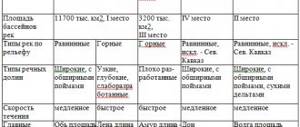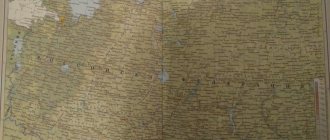Food and river regime
Water flows into rivers from various sources. The rivers are fed by rain, melted snow, glacial and groundwater. Most rivers have several sources of food, but the main one is one.
The type of river feeding is determined by climate. Near the equator, where there is a lot of precipitation, the rivers are fed by rain and are full of water all year round. In tropical latitudes, where there is little precipitation, underground feeding predominates near rivers. In temperate latitudes, rivers have a mixed supply: snow, rain and underground.
Its regime—the change in water level according to the seasons of the year—depends on the flow of water into the river. Seasonal rains, melting snow and ice lead to an annual rise in the water level in the river at the same time - a flood. On most Russian rivers, high water occurs in the spring due to snow melting. Due to sudden and heavy rains, floods occur on rivers - sharp and short-term rises in water levels.
During floods and floods, the river overflows its banks and floods the floodplain - the part of the river valley that rises above the riverbed.
River overflows are often accompanied by floods. Water floods not only the floodplain, but also wide strips of land along the rivers, where cities and villages, railways and roads are located. There are several causes of floods. On the rivers of Eurasia and Sonoran America, filling in the spring is caused by ice jams, when, crowded together, giant ice floes form natural dams that interfere with the movement of water. On rivers flowing into the sea, the water level can rise due to strong storm winds that blow from the sea and push water into the mouth of the river. Rising water levels cause flooding. Many coastal cities located at river mouths, such as St. Petersburg, suffer from such floods.





